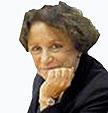MADRID – Robert Zoellick’s announcement that he will not seek reelection as President of the World Bank has focused attention on whether the tradition of putting an American in charge will or should endure.


MADRID – Robert Zoellick’s announcement that he will not seek reelection as President of the World Bank has focused attention on whether the tradition of putting an American in charge will or should endure.
But, legitimate as that question is, it is just a minor aspect of the debate that is needed about the World Bank’s role in the twenty-first century.During its 67 years, the Bank has outgrown its original design with the addition of an arbitration court and three specialist financial institutions: one for the private sector, the International Financial Corporation; another, the Multilateral Investment Guarantee Agency, to insure against political risks; and the International Development Agency, which funds the poorest countries.
The World Bank has become the World Bank Group, though its founding pillar, the International Bank for Reconstruction and Development (IBRD), remains at its center. And that is the problem.Conceived in 1944 at Bretton Woods primarily as an instrument through which a war-torn world’s physical assets were to be rebuilt, the IBRD’s accent was on reconstruction; development was essentially an afterthought, with the first loans going exclusively to Europe. The Bank’s development focus emerged as the reconstruction task waned, and its current breadth and scope was consolidated under Robert McNamara’s presidency, from 1968 to 1981.With decolonization fueling a baby boom of independent countries in the 1950’s and 1960’s, McNamara reinvented the World Bank as a cornerstone of the free world’s model of economics and international relations. The Soviet Union, though a signatory to the Bretton Woods Agreement, never joined the Bank. It was not until 1992 that the Russian Federation, along with 13 other former Soviet republics, became a member.In the late 1990’s, the Bank achieved almost universal membership, and, confronted with the disappearance of communism, began an intense process of self-reflection, which opened the way to interesting new fields of operations, such as governance and anti-corruption. But the changes were incremental, and deeper questions about the organization and its raison d’être were never addressed. Moreover, the immediacy of the needs created by the 2008 financial crisis in terms of food security and credit shortages subdued these debates.The most significant of the many challenges facing the World Bank concerns the logic of its structure and internal functioning. With two-thirds of its staff located in Washington, DC, the Bank needs to reorganize its workforce, which consists of life-tenured experts and a plethora of consultants to overcome the consequent rigidities, but little in between. Furthermore, the organization, conceived first and foremost as a bank, is still the turf of economists and finance specialists, even though lending operations are progressively giving up center stage. In practical terms, a varied, decentralized, and, most importantly, flexible workforce should be among the Bank’s top priorities.Moreover, governance reforms have fallen far short of what is necessary, and barely address the sources of inertia impeding the organization. China, a key development player and the world’s second-largest economy, still accounts for less than 5% of the Bank’s voting shares, while the European Union controls around 37% and the United States holds 16%. With eight Europeans on the Bank’s 25-member Executive Board, the Bank remains a poor reflection of today’s world.But the main challenge facing the World Bank consists in defining its mission and core activities. The Bank’s next president must translate into policy the blurry distinction between "developed” and "developing” countries, and navigate an environment characterized by a bewildering array of development actors, many of them private and focusing on narrow objectives, though often with budgets larger than traditional agencies.The World Bank needs a leader who will appreciate that lending is no longer a valid organizational rationale: Chinese banks have lent more to Latin America during the past five years than the World Bank and the Inter-American Bank combined, and Africa tells a similar story. Just as reconstruction finance gave way to development lending over the course of the Bank’s history, its current focus on banking operations should be reconsidered, as the organization’s main source of added value now lies in its formidable potential as a center of knowledge and a coordinator of international policies.For example, while microfinance, a darling of many development organizations, gets much publicity and attracts numerous donors, critical issues, such as the need to build a regulatory and institutional framework that ensures legal security and allows microenterprises to flourish, are perceived as less attractive. Addressing them should be part of the World Bank’s role.Or consider international aid in the area of health. Many countries in Africa bear witness to the disproportionate amounts devoted (mainly by private foundations) to combating AIDS, malaria, and tuberculosis, while general health-care services receive only symbolic sums. Moreover, the preconditions of more tangible – and therefore more appealing – initiatives remain overlooked. Supplying vaccines, for example, requires infrastructure, logistical coordination, and trained personnel. The World Bank is often the only actor able and willing to address all of these issues effectively.Today, the international community should look for a World Bank president who is attuned to ordinary people’s growing refusal to tolerate glaring global inequalities, and who understands that development is more than GDP growth. Such a leader, regardless of his or her country of origin, will reinvent the World Bank for the century ahead.Ana Palacio is a former Spanish foreign minister and former Senior Vice President and General Counsel of the World Bank. Copyright: Project Syndicate, 2012.


